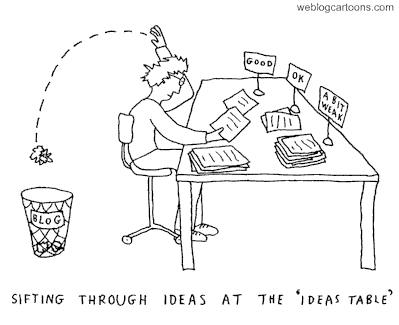Activity 7: Indigenous Knowledge and Cultural Responsiveness in my Practice
This blog uses Rolfe et al’s (2001) reflective model consisting of three key questions: What? So What? and Now What? to reflect on two whole school contexts:
1. Policies - Banding of students in Year 9/10 (Mauri Moe/Noho)
Berryman, M.
(2016). Education for equity, excellence and belonging - “as Maori”. University
of Waikato. Retrieved from https://www.uregina.ca/education/assets/docs/pdf/events/20170310-11-Decolonizing-Teacher-Education-Presentation-Mere-Berryman.pdf
Pohatu, T. W. (2011). Mauri - Rethinking human wellbeing. MAI Review, 3, 1-12. Retrieved from http://www.review.mai.ac.nz/index.php/MR/article/v...
Savage, C.,
Hindle, R., Meyer, L. H., Hynds, A., Penetito, W., & Sleeter, C. E. (2011).
Culturally responsive pedagogies in the classroom: Indigenous student
experiences across the curriculum. Asia-Pacific Journal of Teacher Education,
39(3), 183–198. https://doi.org/10.1080/1359866X.2011.588311
1. Policies - Banding of students in Year 9/10 (Mauri Moe/Noho)
2. Goals - Ka Hikitia/He Kakano/Kia Eke Panuku (Mauri Oho/ Ohooho moving towards Mauri Ora)
What?
Cultural
responsiveness and indigenous knowledge have been elaborated in a previous blog.
Durie (2016) uses the state of mauri to describe the holistic
wellbeing of an individual/learner and
can be expressed through three states: Mauri noho, ohooho, and ora (Table 1). It is comparable to Pohatu (2011) use of the
terms mauri
moe, oho,
and ora (Table 1).
Table 1
Moving from a state of moe/noho to ora can best be realised through a lens
of, “equity, excellence and belonging” (Berryman, 2016). My personal definition of culturally responsive
practice is where the student is at the centre of learning and all students can be
actively engaged as individual learners through programmes that promote equity,
excellence and belonging.
So What?
Policies:
My objection to banding/streaming in our school
is based on the premise that it does not promote equity, excellence and
belonging of all students. Those who
find themselves in top band classes tend to be offered a wider programme, have
higher expectations and tend to form more constructive relationships with their
teachers. We should be having
high expectations, equality of access and diversity/quality of programmes
irrespective of which band a student is in.
Banding or streaming
tends to accentuate socioeconomic disadvantage and is disadvantageous for
students academically, socially and psychologically (Ainscow, 2016; Johnston
& Wildy, 2016). Let’s be honest –
deficit theorizing (at the centre of Te Kotahitanga) is commonplace among
teachers who have lower ability/streamed/banded classes. Disproportionally, our Maori students tend to
be in the mainstream classes rather than top bands. Reflect on banding, streaming or ability
grouping at your school and look at the cultural makeup of those classes. We seem to be adding insult to injury. This is not in keeping with fairness, equity
and inclusivity.
This represents a
state of mauri moe/noho at present. A number
of staff want change in the face of CRP to awaken and nurture our learners, yet
an influential minority want to keep it asleep (or even kill off the
discussion).
Goals:
We have been part of the four year journey that
is Ka Hikitia (accelerating), He Kakano (professional development), and Kia Eke Panuku (step up/lift up). This has brought about a challenging of
current school/personal practice. This
in turn has led to a re-evaluation of school practices and policies by passing
over them the lens of culturally responsive practice. Currently the pastoral system is under
review. However, funding for Kia Eke
Panuku – and in particular the shadow coaching associated with it – has run
out. The question now is, “have we
reached sufficient critical mass that the changes are self-sustaining?” Since we have been involved in these
initiatives, Maori disparity with respect to achievement has narrowed to the
extent that in 2017, there was no disparity between Maori achievement and that
of the senior cohort. In fact our Maori
students out performed Maori students both nationally, and when compared to
other Decile 8 schools in NCEA. Interestingly, there is only English/Maths banding in senior school (see above).
Now What?
The challenges are two-fold.
In terms of banding/streaming we need to keep
advocating for change, always keeping the learner and the notions of equity,
excellence and belonging at the forefront.
This will come up for review in the near future.
In terms of the learning from Ka Hikitia/He Kakano/Kia
Eke Panuku, we need to be wary of what Savage, Hindle, Meyer et al (2011) refer
to as “saturation” (p.194) and a sense of complacency that goals have been
achieved so efforts taper off. We need to find our own way to
sustain the gains we have made to date.
References:
Ainscow, M. (2016). Diversity and Equity: A Global Education Challenge. New Zealand Journal of Educational Studies, 51(2), 143–155. https://doi.org/10.1007/s40841-016-0056-x
Ako: Critical Contexts for Change -
Poutama Pounamu. (2018). Poutamapounamu.org.nz.
Retrieved 12 March 2018, from https://poutamapounamu.org.nz/mauri-ora/ako-critical-contexts-for-change
Durie, M. (2015). Engagement
with rangatahi [power point slides]. Presentation to the Palmerston
North Youth Sector Network. Retrieved from: www.yoss.org.nz/user/file/61/Durie%20
Youth%20Engagement.pdf
Durie, M. (2016, March). Realising
Māori Potential [power point slides]. Tauranga Moana SENCO Hui.
Johnston, O.,
& Wildy D.H. (2016). The effects of streaming in the secondary school on
learning outcomes for Australian students – A review of the international
literature. Australian Journal of Education, 60(1), 42–59. https://doi.org/10.1177/0004944115626522
Lineham, C. (2018). Indigenous
Knowledge & Blue Mink (1969). Retrieved 21 March 2018, from
http://mindlabpracticeclineham.blogspot.co.nz/2018/03/indigenous-knowledge-blue-mink-1969.html
Lineham, C. (2017). Activity
2: A Change in My Practice Towards Future-oriented Learning and Teaching.
Retrieved 21 March 2018, from
http://mindlabpracticeclineham.blogspot.co.nz/2017/11/activity-2-change-in-my-practice.html
Pohatu, T. W. (2011). Mauri - Rethinking human wellbeing. MAI Review, 3, 1-12. Retrieved from http://www.review.mai.ac.nz/index.php/MR/article/v...
Reflective model according to Rolfe et al. - Nicole Brown.
(2015). Nicole Brown. Retrieved
7 March 2018, from
http://www.nicole-brown.co.uk/reflective-model-according-to-rolfe/



Your saturation comment really resonates. It takes a long time for people in power or priviledged positions to become aware of and aknowledge that they have been advantaged, and to realize that it is not natural or fair to exclude others from privilege. Thing like racial and sexual equity can be added to implicit and explicit racism in the way we teach and learn. Makes one think...
ReplyDeletehttps://plus.google.com/u/0/117343150821973536208/posts/ZfWivauCQ5g